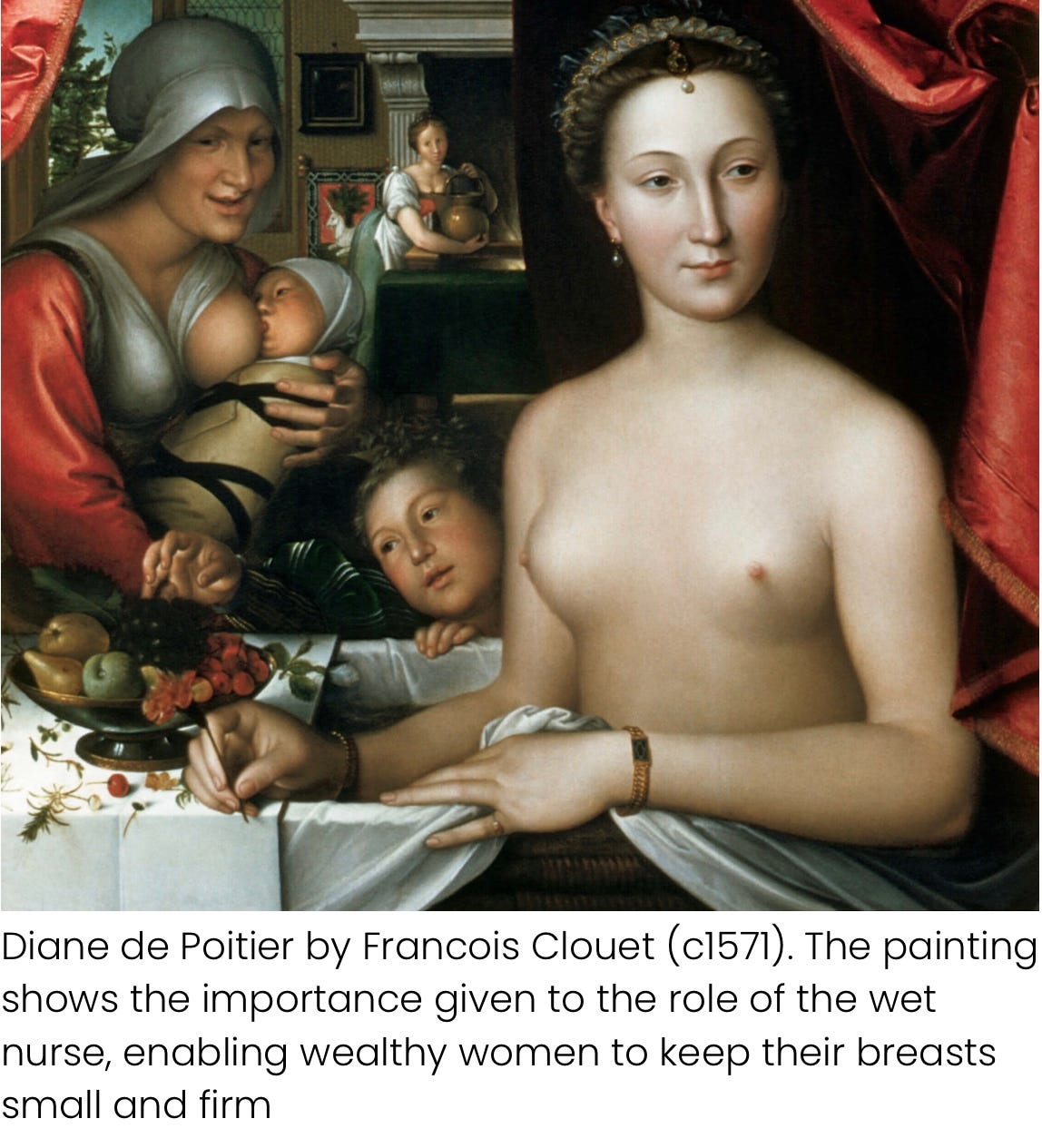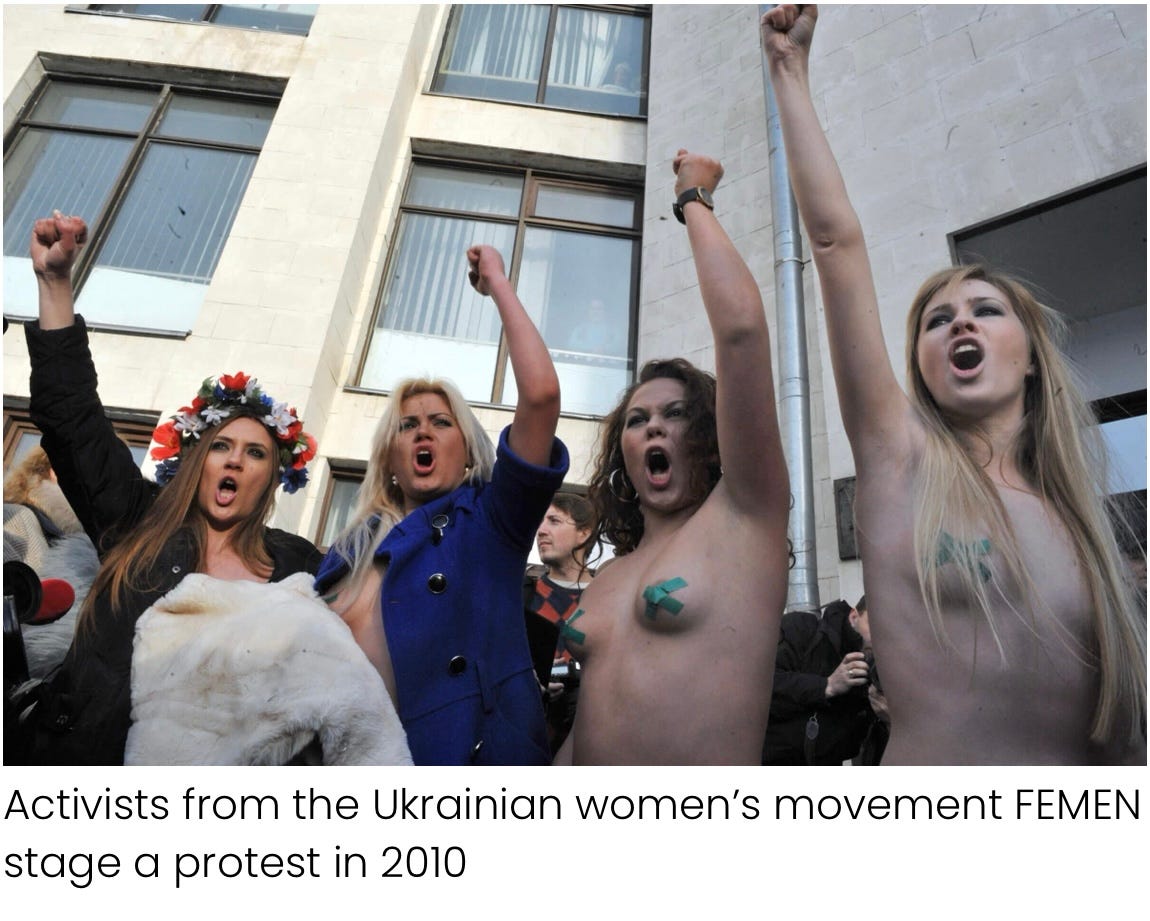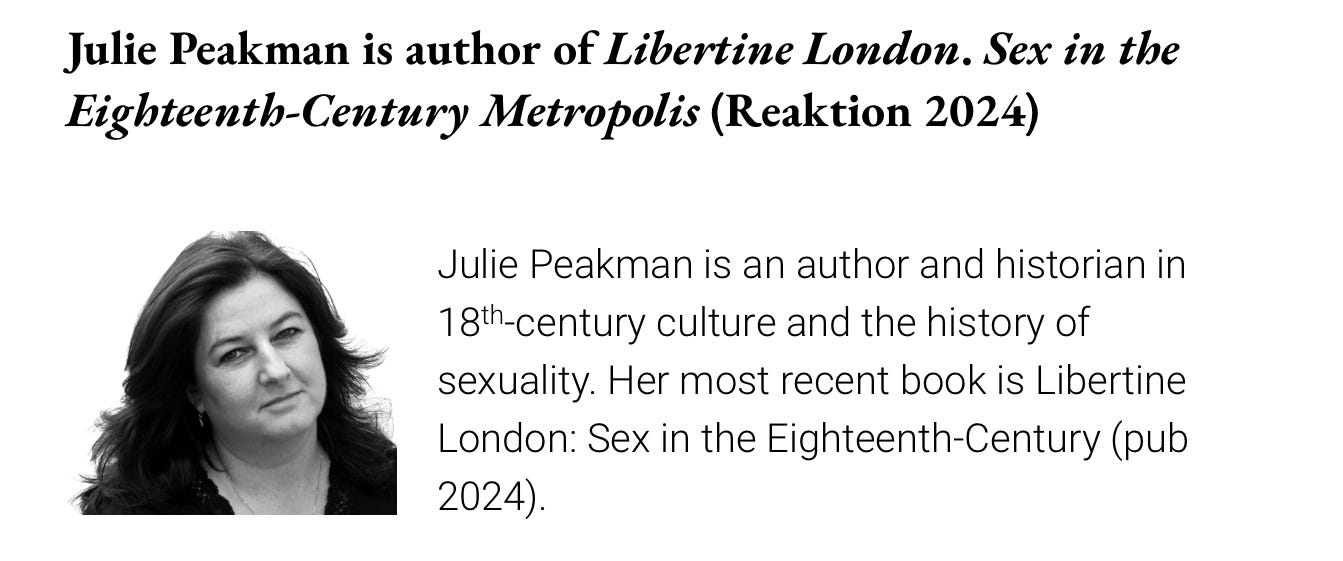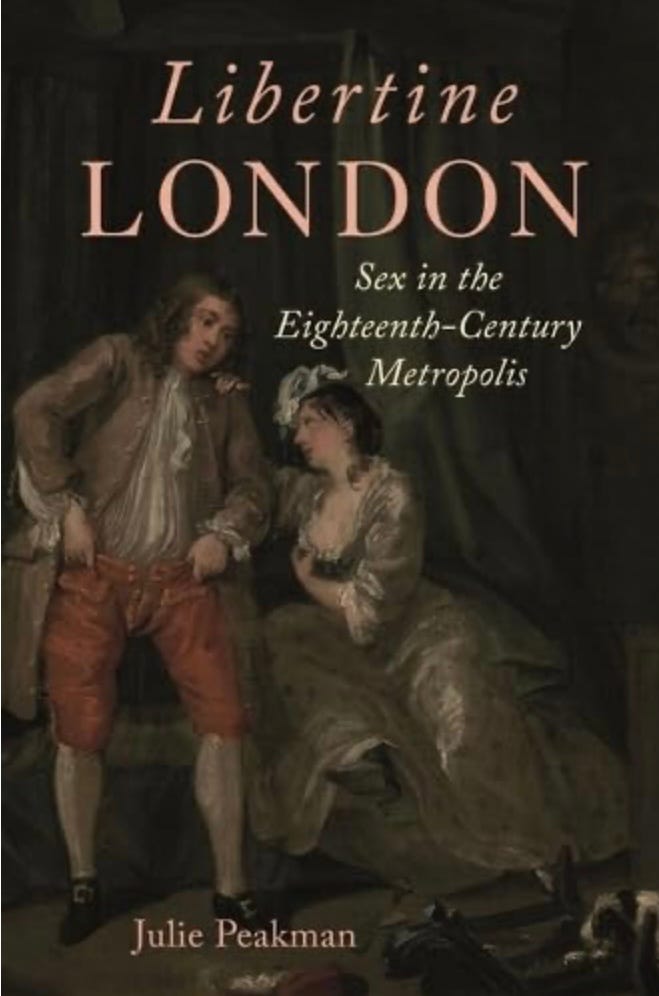Julie Peakman’s Sexual and Political History of Women’s Breasts
A Celebration of the Wonder of Women by Julie Peakman
“From the nursing Madonna of medieval religious paintings to the 19th-century depictions of the French Impressionists, breasts have been the focus of the public gaze. They have held much significance in societies in both a religious and a political sense, as well as a sexual one. As such, the breast has been a great cultural icon throughout history.”
“The fact that men lusted over breasts became a focus of concern for the medieval Church. The chancellor of the University of Paris, Jean Gerson (1363-1429), castigated women's 'open bosom and uncovered breasts', especially when squeezed into tight corsets. One French priest even condemned women who showed off their bosoms to be strung up in Hell by their 'shameless udders'. To him, this blatant display when one sees women's breasts, nipples and flesh represented 'whoredom and ribaldry and all the other sins' in all its sinful glory.”
“Breast milk was deemed to possess magical qualities, and it was believed that it could transmit both the physical and psychological characteristics of the wet nurse, not always a good thing if the nurse was mentally defective, debauched, or infected with venereal disease. The nurturing quality of the breast was given prominence by French physician Ambroise Paré (1510-1590) who served under kings Henry II, Francis II, Charles IX and Henry III. He described breast feeding as pleasurable, "There is a sympathetic connection between breast and womb; as the breast is tickled, the womb is aroused and feels a pleasurable titillation since that little tip of breast is very sensitive because of the nerves that end there'. However most upper-class women gave their children over to wet nurses believing it was beneath them to breast-feed their babies themselves.”
“A woman's sexual proclivity could be read by her breast size according to the 17-century erotic book Rare Verities (1657) which declared little breasts in women are a greater sign of lust, than great ones.' By the 18th century, bosoms began to be described in erotica through a variety of exalted adjectives - 'snowy bosom' and 'angelic orbs' - raising them up as a subject of reverence. Big breasts came to be relished, as seen in the description of women frequenting the flagellation brothels, most popular was the woman 'with the enormous bubbies.'
“By the time of the French Revolution, bare-breasted women figured as symbols for the New Republic, dressed as Amazonian women as depicted by Eugéne Delacroix in Liberty Leading the People (1830), but it would take over a century before women were to gain freedom from covering their breasts.”
“From the mid-20th century, glamorous 1950s film stars like Jayne Mansfield, Marilyn Monroe, Rita Hayworth and Lana Turner became the large breasted ideal women in film. In her 1959 memoir Goodness Had Nothing to Do with It, Mae West described how she regularly rubbed cocoa butter on her breasts and spritzed them with cold water, ‘This treatment made them smooth and firm, and developed muscle tone which kept them right up where they were supposed to be.’”
“In the 1960s, American women were pictured in newspapers discarding their bras in a feminist statement. This had started as a stunt by journalist Lindsy Van Gelder in support of the Women's Liberation movement and their protest against the Miss America Pageant.
“In a bid for gender equality, political campaigns started up to fight for freedom for women to go topless just as men can in North America. The Topfree Equal Rights Association began in the 1970s and spread to Europe and Canada. It assisted (and still assists) women who have been charged for being topless and organized demonstrations to protest against the legal and public attitude to this type of inequality. It had been legal to go topless in New York since 1992, but Phoenix Feeley was arrested for going topless in New York City in 2007. She sued the city and won $29,000. Go Topless was founded the same year and since then, the organisation has celebrated an annual Go Topless Day. In Sweden, Bara Bröst is active in advancing Topfreedom, as is Topless Front in Denmark.”
An eye-opening and richly detailed history of women's sexuality that upends entrenched perceptions of the long eighteenth century. Libertine London investigates the sex lives of women throughout the period 1680 to 1830, known as the long eighteenth century. The book uncovers the various experiences of women, whether as mistresses, adultresses, or as participants in the sex trade. From renowned courtesans to downtrodden streetwalkers, it examines the multifaceted lives of these women within brothels, on stage, and even behind bars. Based on new research in court transcripts, asylum records, magazines, pamphlets, satires, songs, theater plays, and erotica, Libertine London reveals the gruesome treatment of women who were sexually active outside of marriage. Julie Peakman looks at sex from women's points of view, undercutting the traditional image of the bawdy eighteenth century to expose a more sordid side, which often left women distressed, ostracized, and vilified for their sexual behavior. Free PDF Download.
Libertine London: Sex in the Eighteenth-Century Metropolis by Julie Peakman
Free eBook Download
ISBN # 9781789148473
ASIN # 1789148472
English
Date of Publication: July 30, 2024
PDF File Name: Libertine_London_-_Julie_Peakman.pdf
PDF File Size: 84 MB













